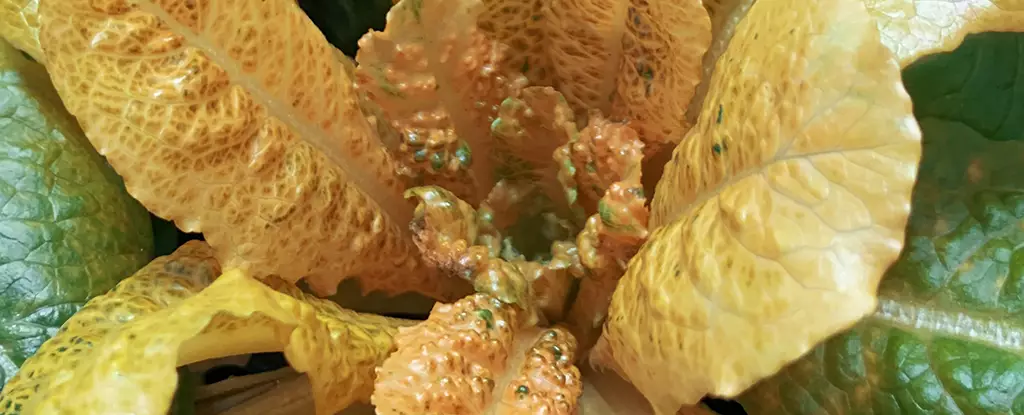In today’s world, where dietary deficiencies plague numerous populations, researchers are incessantly exploring innovative solutions that can bolster nutritional intake through natural food sources. One such promising advancement emerges from the lab of Valencia Polytechnic University (UPV) in Spain—scientists have successfully engineered a ‘golden lettuce’ with significantly elevated levels of vitamin A, a nutrient essential for maintaining immune system function, supporting vision, and facilitating growth and development. Through genetic modifications, this breakthrough not only stands to transform the nutritional landscape for lettuce but also paves the way for enhanced health benefits in a variety of other vegetables in the future.
The creation of this genetically modified lettuce—formally known as Lactuca sativa—was achieved by increasing the levels of beta-carotene, a red-orange pigment that the human body converts into vitamin A. Prior to this innovation, the researchers had already enhanced beta-carotene in a tobacco relative, Nicotiana benthamiana, amplifying its concentration five-fold. However, it was essential that the genetic modifications to lettuce occurred without disrupting its vital photosynthetic processes. As stated by molecular biologist Manuel Rodríguez Concepción, “Leaves need carotenoids such as beta-carotene in the photosynthetic complexes of chloroplasts for their proper functioning.” Thus, the challenge lay in augmenting beta-carotene levels without compromising the plant’s ability to conduct photosynthesis.
To navigate this challenge, UPV’s research team employed a multi-faceted approach. They devised an ingenious method that allowed beta-carotene to be stored in cellular compartments outside of the chloroplasts, thereby maintaining the plant’s functionality. The technique involved the conversion of chloroplasts into chromoplasts—specialized storage organelles capable of harboring even greater concentrations of beta-carotene. This was achieved through the introduction of a gene coding for a bacterial enzyme known as crtB. In addition, the application of high-intensity light treatments stimulated the development of fatty storage units called plastoglobules, which further enhanced beta-carotene accumulation, as noted by molecular biologist Luca Morelli.
What sets this engineered lettuce apart is not merely the increase in beta-carotene but also the emphasis on improving the compound’s bioaccessibility. Bioaccessibility refers to the proportion of a nutrient that is released from its food matrix during digestion and becomes available for absorption in the intestines. The researchers’ innovative methods not only boosted the lettuce’s beta-carotene levels but also facilitated its conversion into vitamin A within the body, enhancing its overall health benefits. In essence, this advancement holds incredible potential for improving the nutritional profiles of common vegetables, enabling them to serve as fortified food sources that can combat vitamin deficiencies.
The global significance of this research extends beyond the laboratory. A study conducted in 2023 highlighted that vitamin A deficiency impacts hundreds of millions of individuals, particularly in developing nations. The health consequences of inadequate vitamin A intake are profound, leading to compromised immune responses, difficulties in vision, and impaired growth. By offering a sustainable and natural means of enhancing dietary vitamin A levels, this ‘golden lettuce’ represents a crucial step toward alleviating malnutrition.
Moreover, the methods developed through this research could serve as a blueprint for future agricultural endeavors aimed at boosting the nutritional value of other staple crops. Instead of relying on synthetic supplements, this biotechnological approach encourages the cultivation of nutrient-rich food directly, supporting both environmental sustainability and public health.
The advent of genetically engineered ‘golden lettuce’ illustrates the intersection of science, agriculture, and nutrition—a promising intersection that could redefine dietary standards and improve health outcomes worldwide. As we continue to confront nutritional challenges on a global scale, such innovations will play an essential role in shaping a healthier future, demonstrating the immense potential that lies in the fusion of biotechnology and traditional agriculture.


Leave a Reply